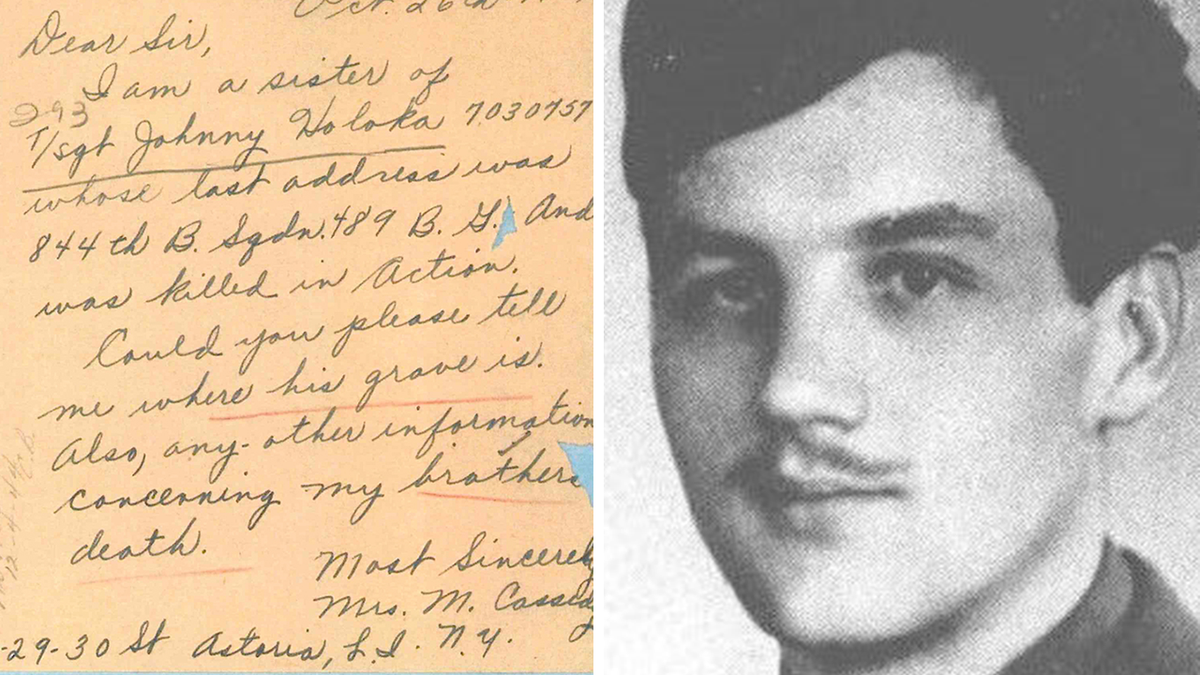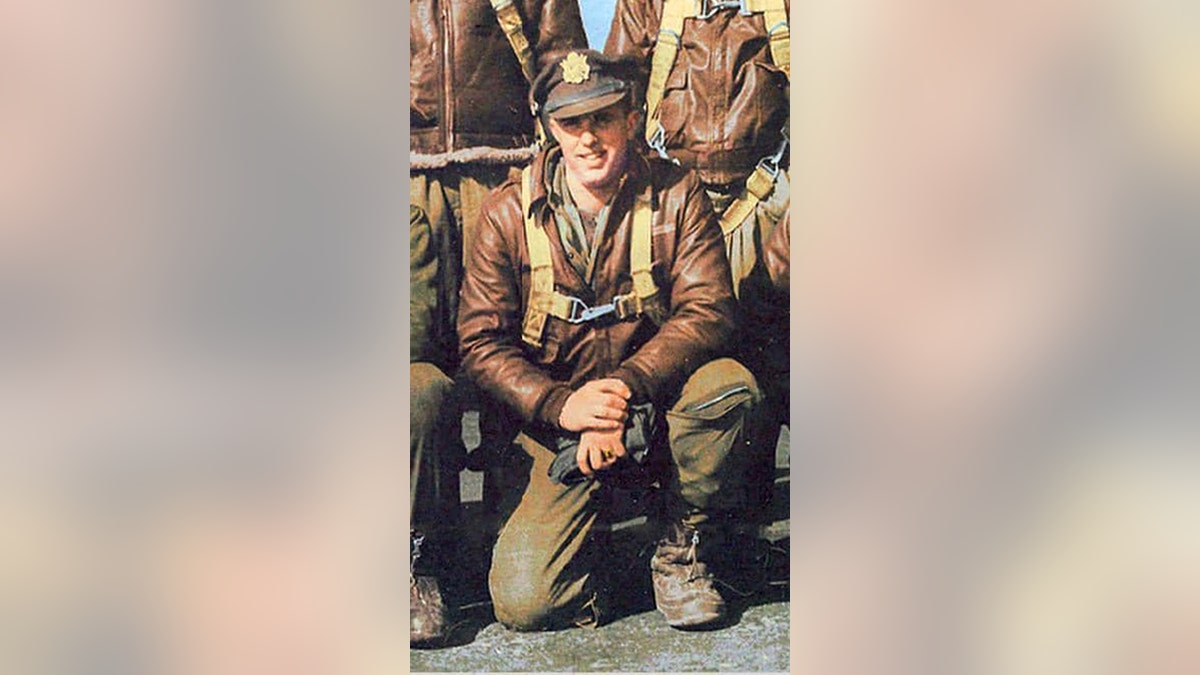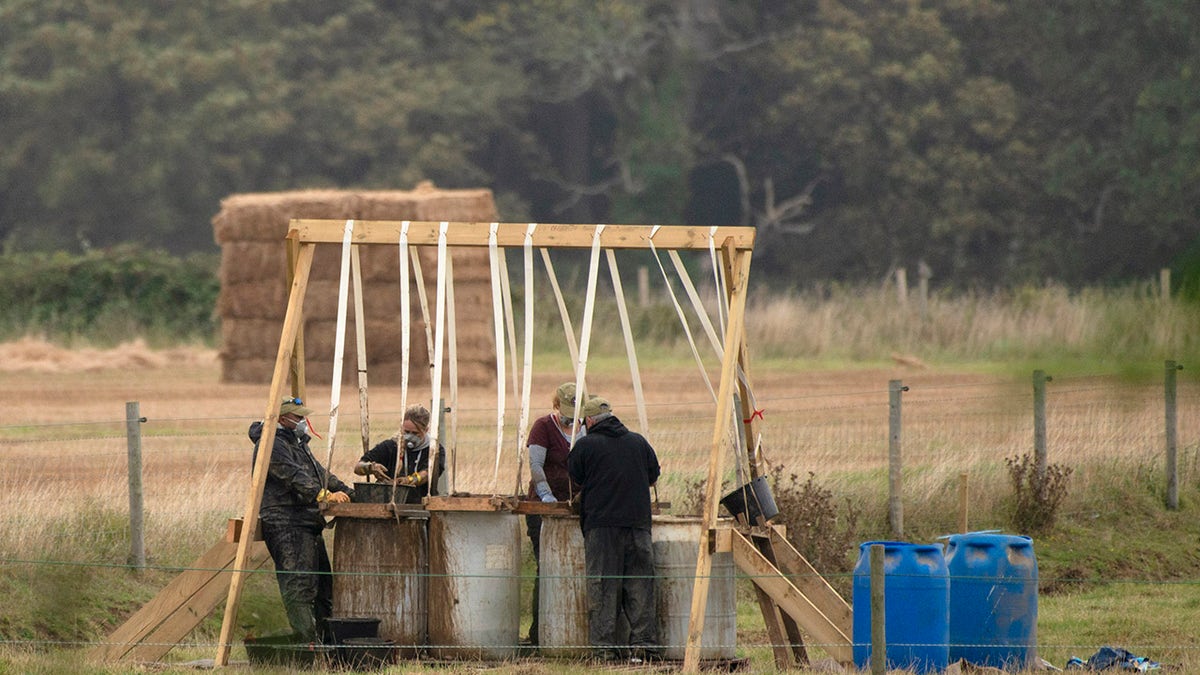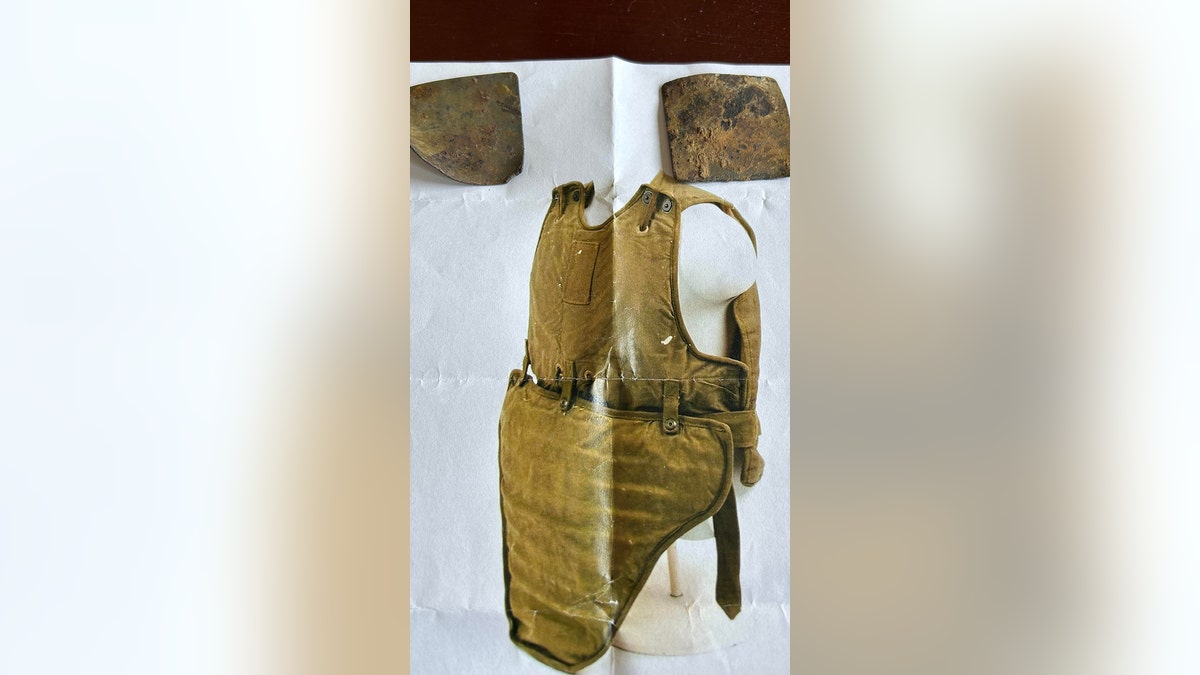WWII airman's relative reveals emotion around discovery of great-uncle's remains
Keith Levatino of New York learned of Sgt. John Holoka's remains after his family spent over five decades wondering about the details of the airman's death. Levatino talked about the discovery — and about having "closure."
The great-nephew of a late U.S. Army Air Corps member recently received shocking — and welcome news — about a relative's death.
In 1944, Sgt. John Holoka, age 25, was serving during World War II in the U.S. Army Air Corps when his family was informed that he died in the line of duty.
The family, based in Cresson, Pennsylvania, was given no details of his death — and for many decades, they tried to obtain information about what happened.
US AIRMAN'S REMAINs FORMALLY IDENTIFIED 79 YEARS AFTER B-24 CRASHED DURING WORLD WAR II
Recently, however, Holoka’s great-nephew, Keith Levatino of Little Falls, New York, received word that Holoka’s remains were finally located.
He told Fox News Digital in an interview that the news — and the details — brought much-needed closure. (SEE the video interview with Levatino at the top of this article.)
Sgt. Holoka’s Story
"I remember hearing stories that he crashed in the ocean, that he crashed in different parts of Europe," Levatino said about his great-uncle, Sgt. John Holoka.

Sgt. Holoka was just 25 years old when he was involved in a plane crash while serving his country during World War II with the U.S. Army Air Corps. (Keith Levatino)
He has memories of his relatives talking about his great-uncle, he said.
He also said he learned about him from the large photo his grandmother kept of her lost brother at her home.
"Every place they lived, there was a big portrait of Uncle John Holoka," Levatino recalled.

Above, a letter that Keith Levatino's grandmother wrote in Oct. 1944 to try to find some answers about what happened to her brother. (Keith Levatino)
For nearly six decades, Levatino’s grandmother and her siblings wrote letters to the Army — hoping and praying to get answers and specifics about how the young airman died.
Although Holoka's siblings have now passed, Levatino said it was always unsettling to him that they never had concrete answers about what happened to their "Johnny."
Then, in 2017, "out of the blue," his family received a long-awaited call.
How the remains were discovered
Levatino was contacted that year by a representative from the U.S. Army Corps.
The representative said that the Army Corps would be initiating a dig to locate the remains of various soldiers — including Holoka.

Sgt. John Holoka, a U.S. Army Air Force engineer (shown here), died in 1944. On the left, a photo of a letter written to Army officials by Holoka's sister asking for information on his death and the location of his grave. (Keith Levatino/DPAA)
The representative asked Levatino if he would be willing to give DNA, potentially to connect that DNA with any remains of Holoka that might be found.
Levantino readily agreed.
NEW JERSEY MAN WALKS ACROSS US TO RAISE NEARLY $100K FOR HOMELESS VETS: ‘RESPECT AND REVERENCE’
Sgt. Holoka's remains were then located — and identified.
"You can imagine what I felt there, that they knew where he was," Levatino told Fox News Digital.
"I now have closure, not for me, but to preserve his memory, his service."
"I’m doing this all for my grandmother and her family, because it’s helping me put closure to what they looked for, for five or six decades," he also said.
The details of Holoka's last flight as he served his country — and of his death — also finally came to light.
Sgt. Holoka's last moments
On June 22, 1944, a B-24H Liberator was shot down near Arundel, West Sussex, killing three of the 10 men of the crew, the Department of Defense reported.

Pictured is Lt. William Montgomery, whose remains were also discovered in the same site dig in England. (Richard L. Molloy/BNPS)
The plane was shot down by anti-aircraft flak after it conducted a bombing raid on a German airfield in nearby Versailles, France.
The pilot was somehow able to keep the plane moving over the English coast — before ordering the crew to bail, according to the Dept. of Defense.
Seven of the crew's 10 men successfully bailed out of the aircraft.
But 24-year-old Lt. William Montgomery, co-pilot John Crowther and engineer Sgt. John Holoka all remained on board to try to recover the aircraft, as Fox News Digital reported earlier.
"The stricken plane crashed into a ball of flames minutes later," news service BNPS noted of the crash.
Levatino said he hopes that "my grandmother and her relatives now have the peace that they were looking for all those years."
Co-pilot Crowther was immediately recovered — but Montgomery and Holoka remained lost for decades, National Geographic reported.
Lt. Montgomery's remains were found in the same dig that revealed Sgt. Holoka's remains, as Fox News Digital noted.
Holoka, who was an engineer on the B-24H Liberator, would have been sitting near the front of the plane, said Levatino; this is where the engineers would sit during flight.

Archeologists are shown searching for remains in a field in Arundel in 2019. The remains of U.S. airmen who were killed when their bomber crashed on an English farm were discovered and formally identified 79 years later. (BNPS)
The American Graves Registration Command (AGRC), Army Quartermaster Corps had been tasked with recovering missing personnel from the crash site in 1946, according to a press release by the Dept. of Defense.
In November 1947, AGRC investigators searched the crash site's area but did not discover the remains of any other crewmembers, the Dept. of Defense said.
In May 1950, Holoka was declared "non-recoverable."
"I know the whole story."
In both 2017 and 2019, the U.S. Dept. of Defense made efforts to recover possible human remains at the crash site.
Levatino had been doing his own research in the meantime, he said.
AT 103, DOWNED WORLD WAR II PILOT REMEMBERS FATEFUL 50TH MISSION
The plane reportedly crashed on Park Farm in Arundel, England.
Levatino was able to track down the owner of the farm, as well as the lead American archeologist on the dig team.

The U.S. bomber had been shot by anti-aircraft flak during an attack on a German airfield in northern France. It made it back across the English coast before losing height off the Sussex coast. (BNPS)
"That led me to talking with the British archeological team, the archeologist … and they have cataloged the whole incident," he said.
The man who now owns Park Farm, which had stayed in the family through successive generations, told Levatino about his father and grandfather seeing the plane crash on their land.
"I know the whole story," he said.
Finding a lost hero
During the dig, Holoka was finally identified.
CLICK HERE TO GET THE FOX NEWS APP
"They found a piece of jawbone and three molar cavities … and one of the molars [had] the root of a tooth and that’s where DNA was found," Levatino said.
Holoka’s remains were found using anthropological analysis, material evidence and dental mitochondrial DNA and Y chromosome analysis, the Dept. of Defense reported in a press release.

Pieces from a flak vest proved that the findings of the dig had been at the crash site for nearly 80 years. (Keith Levatino)
Levatino was sent pieces of a body vest that had been buried for 79 years.
While it might not have been the exact one that belonged to his great-uncle (and vests are made differently today), the old style of manufacturing indicates it did belong to one of the lost crewmembers, he said.
Levatino has been in contact with a relative of Lt. Montgomery's, he said, adding that they've been able to discuss their late relatives.
CLICK HERE TO SIGN UP FOR OUR LIFESTYLE NEWSLETTER
"I now have closure — not for me, but to preserve his memory, his service," he said of the discovery of his great-uncle's remains.
He also said he hopes that "my grandmother and her relatives now have the peace that they were looking for all those years."
Holoka will be buried in Portage, Pennsylvania, on May 1, 2023, the Dept. of Defense indicated.

